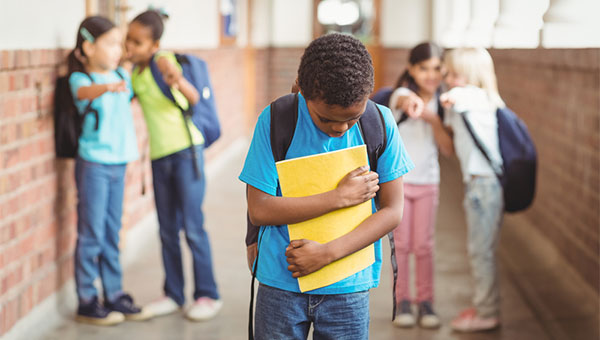“Sticks and stones will break your bones, but words will never hurt you.” We’ve all heard it before. However, today those words are getting stronger and are being shared, tweeted, posted and liked. Bullying is a problem that reaches into the community, the schools and family culture.
Bullies at School
School is a place where students should feel safe and supported by the teachers, faculty and students around them. Approximately 32 percent of students report being bullied at school. Bullying may lead to physical violence, anxiety, depression, other health-related problems and academic performance. Here are a few ways parents can help prevent bullying:
- Talk to your child every day. Ask questions about school, their friends and their teachers. Children who are comfortable talking to you may be more likely to come to you with a problem they’re involved with.
- Be a volunteer at school. Schools don’t often have the staff necessary to give all students one-on-one attention. Volunteering may bring you closer to your child, as well as allow you to observe children’s interaction with each other.
- Make anti-bullying habits. Before school even starts, teach your child not to push, tease or be mean to others during play groups or with siblings. Teach them to be kind and take turns.
- Make sure your child understands the concept. Teach your child to know what a bully is or what being bullied means. Show them the difference between normal behaviors and interactions, and bullying. This may teach them how to treat others and recognize when another child is being bullied or bullying.
Cyber Bullying
Technology has made it easier for students to communicate online. However, that same technology may be used as a way to victimize others or to become a victim of bullying. Schools are using technology and computers as learning tools, which may require students to be online more than some parents would like. Social media, public forums and mobile apps are being used as a new version of the school yard playground. Here are a few things that might help prevent or reduce the risk of being bullied online:
- Establish technology rules. Work with your child to establish a set of websites they’re permitted to go to. Schedule different times they can go online for homework and for fun.
- Follow them. Ask your child to friend or follow you online so you can interact with each other. This also gives you an opportunity to keep an eye on questionable situations.
- Teach them about the power of the internet. Show your child how quickly their online presence can spread. Let them know what kind of information is okay to share and what’s not.
Recognizing the signs in your child’s school or online can help reduce the chances of your child becoming the victim of a bully or bullying others.




